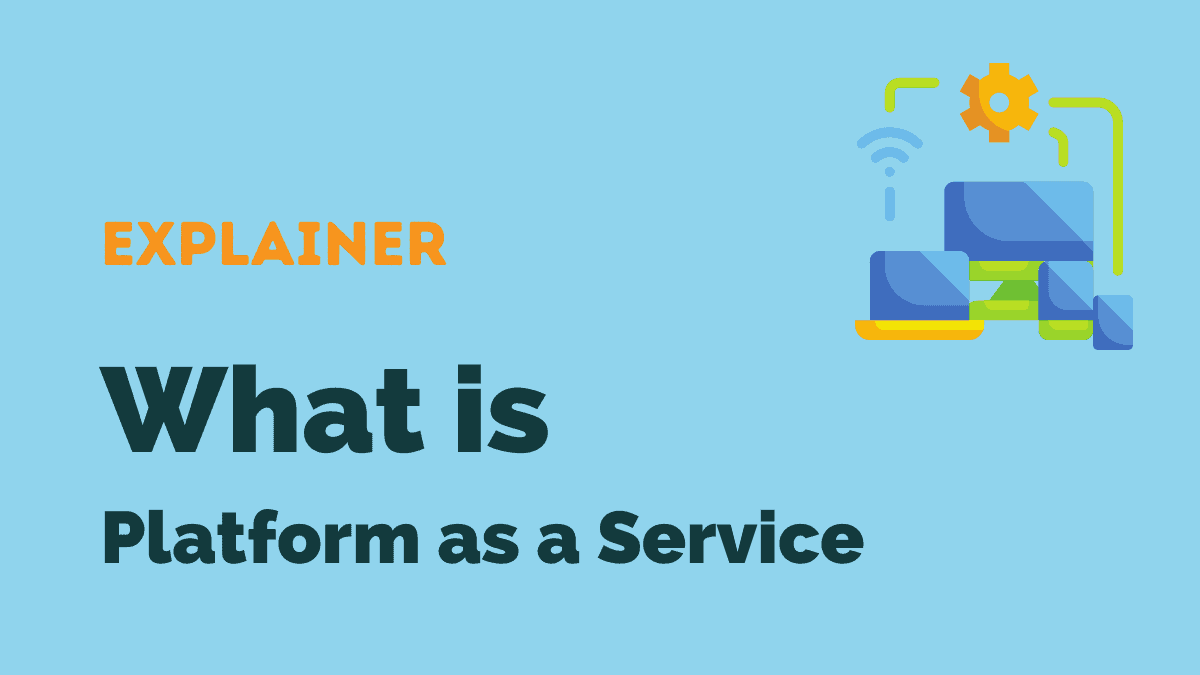In this post:
- What can be included in Platform as a Service?
- How would a call center use PaaS?
- How is PaaS different from IaaS and SaaS?
Platform as a Service (PaaS) is a cloud computing service in the form of a supporting platform provided by a third party. This service is accessible via the Internet, which means it can be available remotely without the need to host the platform locally. This is what makes it a “cloud service”. Developers can then build on this platform with their own customized applications.
What can be included in Platform as a Service?
Much like with IaaS (Infrastructure as a Service), businesses using PaaS don’t have to worry about providing hardware such as servers and data storage. That said, PaaS goes one step further and provides the system infrastructure for developers to create, maintain, and manage applications.
Most PaaS models will include the following:
- Networking infrastructure
- Cloud servers
- Middleware
- Development tools
- Database management services
How would a call center use PaaS?
When call centers use a cloud-computing model, one of the immediate benefits is that everything is easily accessible with just an Internet connection. This makes it far easier for your team to collaborate.
You can use PaaS in various ways to improve the customer experience within the call center environment in particular. Here are some of the main selling points:
- Enables remote working. When the pandemic started, many call centers were forced to adjust to remote working. PaaS can be used to enable virtual call centers, where agents can easily work from home.
- Creates customer databases. You can use PaaS to create customer databases that are secure but also easily accessible for employees. Since PaaS doesn’t provide the software, it means there is increased customizability for developers.
- Requires you to only pay for what you need. Due to the fact that PaaS operates as a “service”, you only need to pay for what you use. If a particular service is not working for your call center, you can end your contract with the service.
- Facilitates instant availability. If your business subscribes to PaaS, then you don’t have to waste time setting up the complex infrastructure and systems to support your call center. Most PaaS models are immediately accessible online once a company has signed up.
- Saves money. Since all the hardware is outsourced to a third party, this cuts back on set-up costs and various other overheads that would be associated with supporting infrastructures like servers and data storage.
How is PaaS different from IaaS and SaaS?
Think about it as layers of service. The most basic level of service is IaaS. This provides computing power, data storage, and networking capabilities. It’s available online, so you don’t have to worry about providing the space for this equipment.
If you’re looking for something more, then the step up from this is PaaS. Platform as a Service provides your business with a platform for you to develop and create customizable apps, along with the infrastructure to support them.
Software as a Service provides ready-to-use software to support your business requirements. Some call centers operate entirely virtually, using ready-made virtual call center software provided as a cloud service.
To understand the differences between the three a little more, take a look at the table below.
| IaaS | PaaS | SaaS | |
| Hardware | ✓ | ✓ | ✓ |
| Virtualisation | ✓ | ✓ | ✓ |
| OS | x | ✓ | ✓ |
| Runtime | x | ✓ | ✓ |
| Data | x | x | ✓ |
| Application | x | x | ✓ |
Since SaaS provides ready-made software solutions without the need for a team of developers, it is often the first option for many contact centers. However, if a company wants the benefit of being able to create highly customizable applications that can be used with any API, then PaaS might be the way to go.
If you’re considering upgrading your business with SaaS, take a look at our cloud-based contact center platform.




